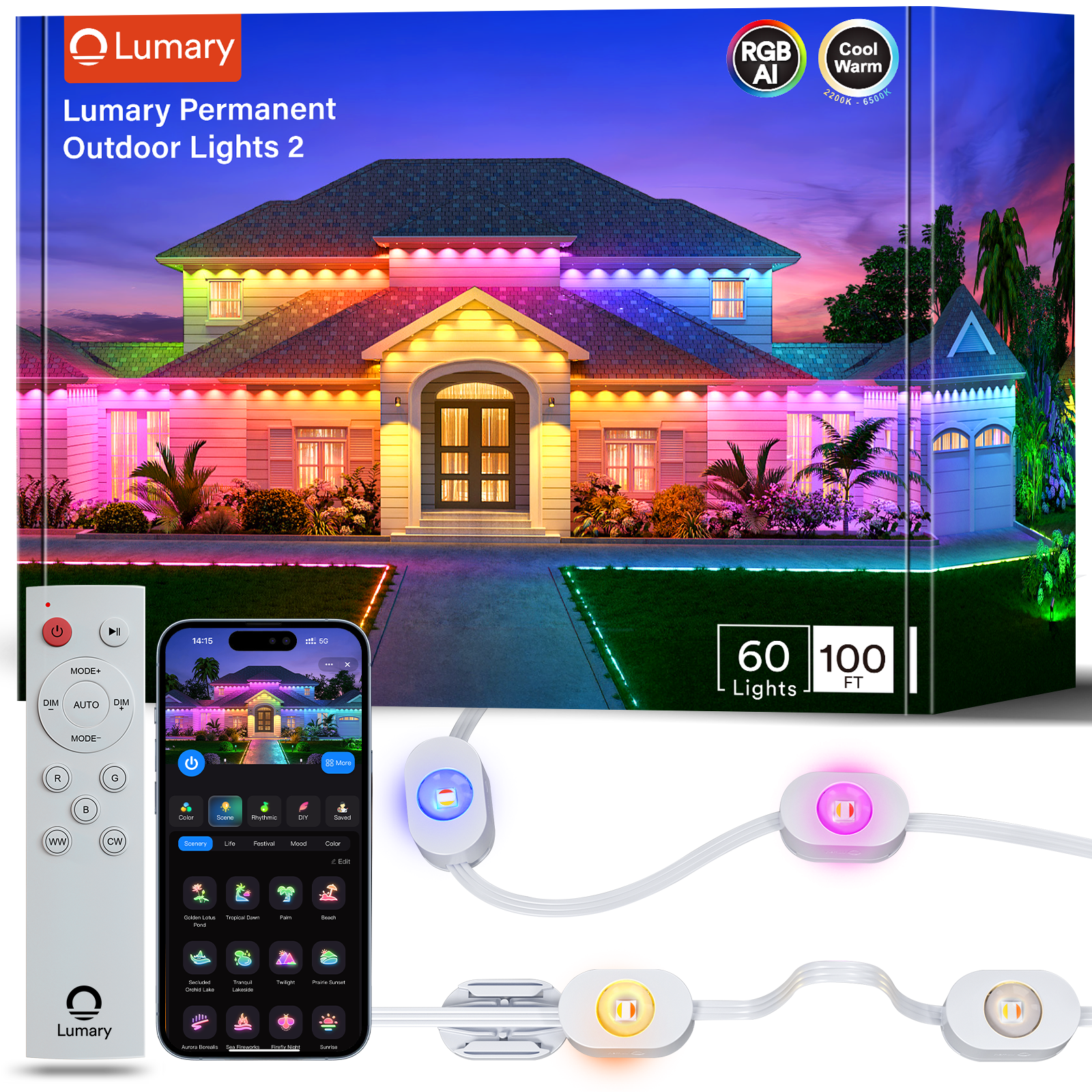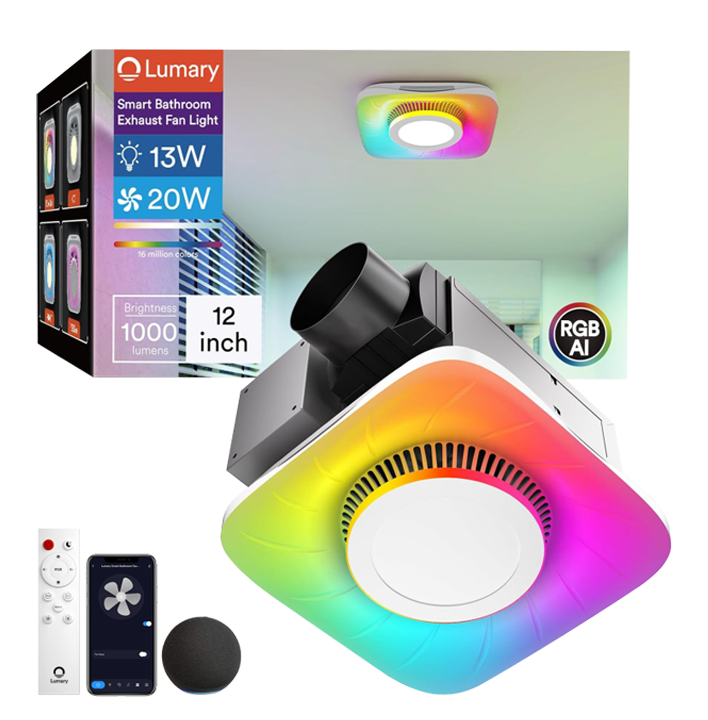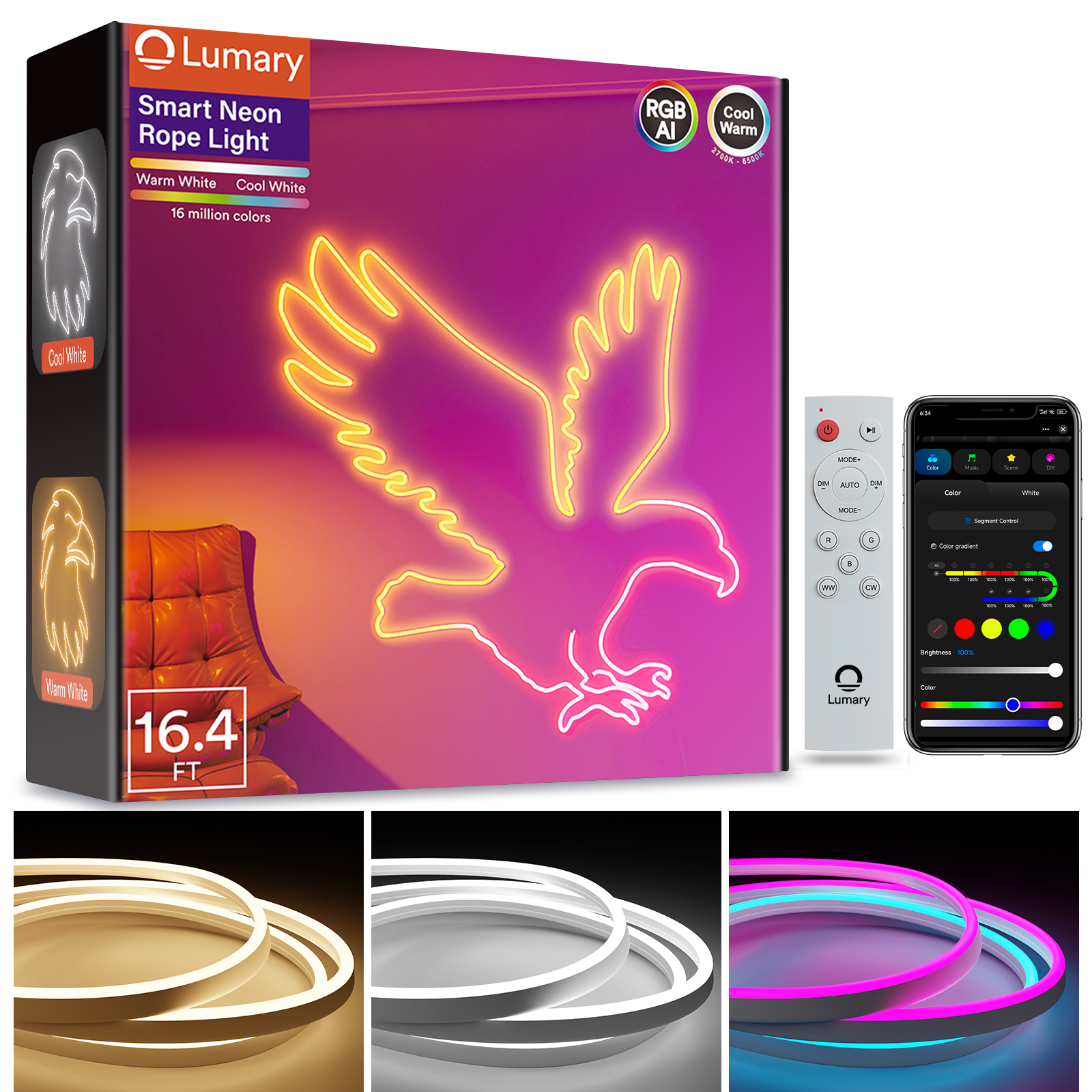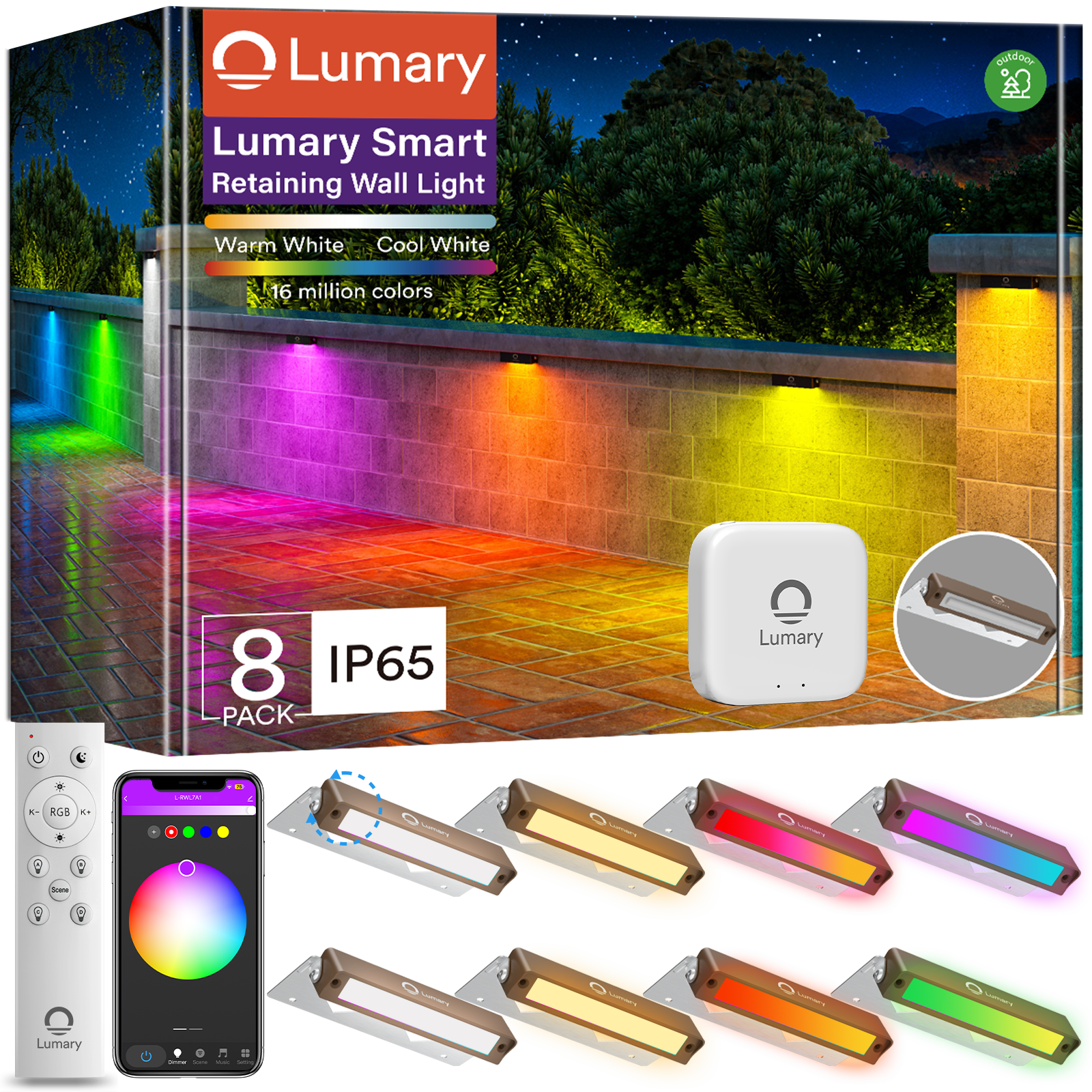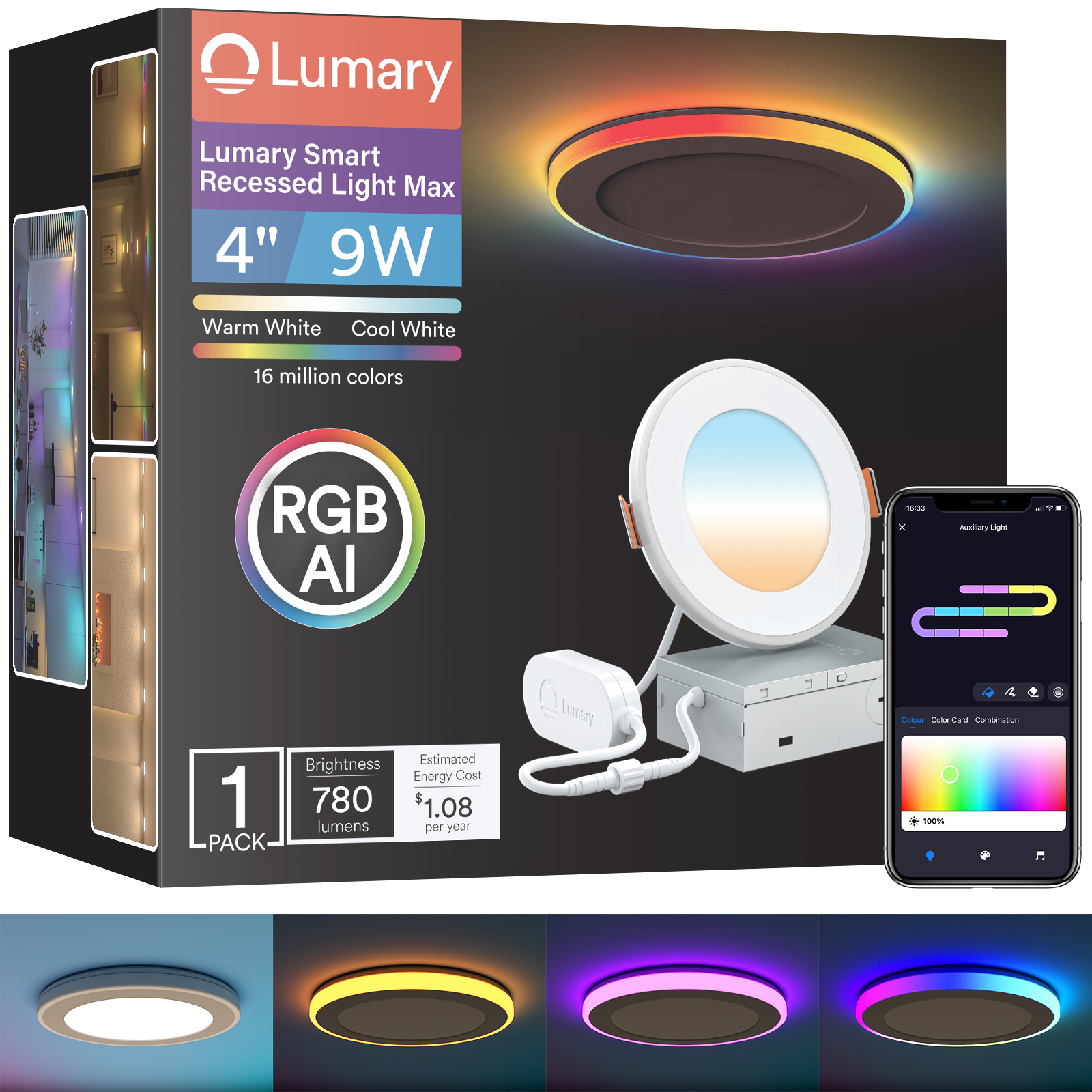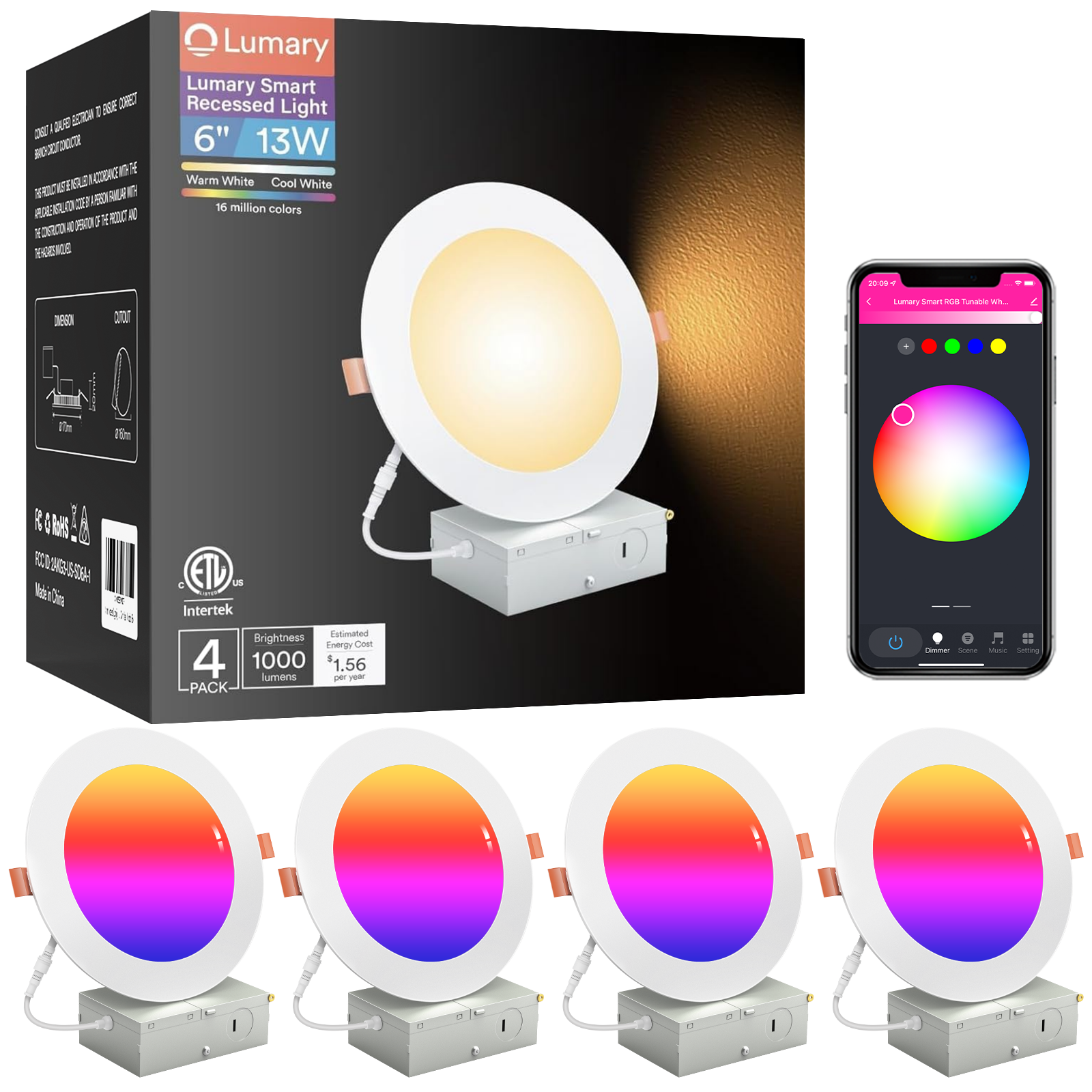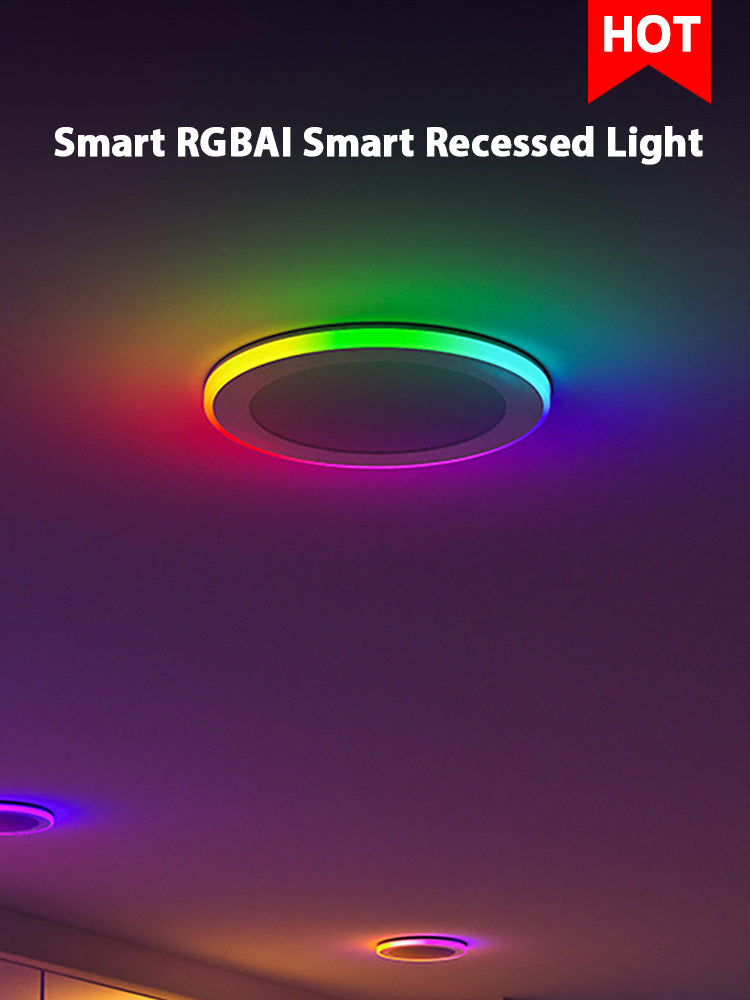You can upgrade your home lighting with recessed lights and enjoy both style and efficiency. Installing recessed fixtures might seem tricky at first, but you can handle it with the right approach. Safety comes first, so you should always prepare before starting. Mistakes can happen, but you can avoid them with a clear plan. If you feel unsure, asking for help is always a smart move.
Key Takeaways
-
Always turn off the power at the circuit breaker first. Use a voltage tester to check for safety.
-
Clean your workspace before you start. Make sure you have all the tools you need. This helps stop accidents and makes work easier.
-
Pick recessed lights that match your style and are safe. Look for smart controls and energy-saving features.
-
Plan your lighting layout so there are no dark spots. Measure and mark each spot for even light.
-
If wiring seems hard or you feel unsure, call a professional electrician for help.
Safety Tips for Recessed Lighting
When you put in recessed lighting, you want to stay safe. These safety tips help you stop problems and make things easier.
Turning Off Power
Before you touch wires or work with recessed fixtures, turn off the power. Go to your circuit breaker and switch off power for the room. Always check with a voltage tester to see if wires are live. This step keeps you safe from electric shocks and helps your project.
Tip: Never skip this step. Even if you think power is off, always test before touching wires.
Here’s a quick checklist:
-
Turn off power at the circuit breaker.
-
Remove the fuse if you need to.
-
Use a voltage tester to check for current.
Preparing the Workspace
A clean workspace helps you avoid accidents. Move furniture away and cover things to protect them from dust. Make sure you have a strong ladder and clear space to reach the ceiling. Check if the ceiling can hold the recessed fixture. Sometimes you need to make the area stronger. If you have insulation, find out if your recessed lighting needs covers to stop overheating.
|
Description |
|
|---|---|
|
Check Ceiling Structure |
Make sure the ceiling can hold the recessed light. Make it stronger if needed. |
|
Access to Ceiling Space |
Good access makes wiring and installation safer and easier. |
|
Use Hole Saw for Openings |
Use a hole saw for neat, snug openings for your recessed lights. |
|
Insulation Awareness |
Know your insulation needs. Use covers if your recessed fixture needs it. |
Using Safety Gear
Always wear safety gear when working with recessed lighting. Safety glasses keep dust and debris out of your eyes. Gloves protect your hands from sharp edges. Keep a flashlight and first-aid kit close in case you need them. If you see exposed wires, cover them right away to stop shocks later.
-
Wear safety glasses.
-
Use gloves for protection.
-
Keep emergency supplies close.
-
Cover exposed wires.
Note: Many safety problems happen because people skip these steps. Here are some common issues:
|
Safety Incident |
Description |
|---|---|
|
Electrical Hazards |
Bad wiring can cause fires. |
|
Code Violations |
DIY jobs may not meet local codes, risking safety and legality. |
|
Electric Shocks |
Not knowing your home’s wiring can lead to shocks. |
|
Costly Do-Overs |
Poor planning means you might have to redo the work, costing more money. |
Following these safety tips helps you stop problems and keeps your recessed lighting project going well.
Tools and Materials for Recessed Lights
Essential Tools Checklist
You need the right tools before you start. Having your tools ready makes things easier and safer. Here is a simple checklist to help you:
-
Screwdriver set
-
Wire stripper and cutter
-
Tape measure
-
Pencil or chalk for marking
-
Stud finder
-
Recessed light fixtures (use IC-rated if you have insulation)
-
LED bulbs (pick energy-saving ones for best results)
-
Electrical cables (14/2 NM cable)
-
Junction box (if you need it)
-
Wire nuts
-
Electrical tape
-
Ceiling patch (optional)
Tip: Put out all your tools before you begin. This helps you work faster and make fewer mistakes.
Choosing the Right Recessed Lights
The right recessed lights can change how your home looks. You want lights that are safe, easy to put in, and match your style. Smart recessed lights, like the Lumary Smart Recessed Light Pro, have many good features. These lights do not need big cans in the ceiling. This makes putting them in much easier.
The Lumary Smart Recessed Light Pro has three lighting modes. Downlight is for normal use. Nightlight gives a soft, cozy glow. RGB Light lets you pick fun colors. You can choose from 16 million colors and over 14 scene modes. You can make the lights brighter or dimmer, from 1% to 100%. You can use your voice with Alexa or Google Assistant, or use the Lumary app on your phone. The lights work with 2.4GHz Wi-Fi, so you can control them from anywhere.
Safety is important, too. Look for lights with safety certifications like ETL and FCC. Here are some common safety certifications to look for:
|
Certification Standard |
Description |
|---|---|
|
UL 1598 |
Standard for Luminaires |
|
UL 8750 |
LED Equipment for Lighting Products |
|
IEC 60598 |
Standards for luminaires |
These certifications mean the lights are safe and good quality. Always read the instructions from the maker before you start. If your ceiling has insulation, use covers to stop overheating and keep your home safe.
Planning Your Recessed Lighting Layout
When you plan your recessed lighting layout, you set the stage for a bright and balanced room. Good planning helps you avoid dark spots and makes your space look great. You want your lights to fit the room’s purpose and style.
Marking Installation Spots
Start by looking at your ceiling and thinking about where you want each recessed light. Use a pencil to mark the spots. A tape measure helps you keep things even. If you have a stud finder, check for joists or pipes so you do not cut into them. You want to place each recessed fixture where it will give the most light without hitting anything inside the ceiling.
Here’s a simple way to mark your spots:
-
Decide how many recessed lights you need for the room.
-
Measure equal distances between each spot.
-
Mark the center of each spot with a pencil.
-
Double-check that no spot lines up with a ceiling joist.
Tip: If you use Lumary recessed lights, you can take advantage of their canless design. This makes it easier to fit them in tight spaces and gives you more freedom to choose your layout.
Spacing and Placement Tips
Getting the spacing right is key for even light. If you put recessed lights too close, you get glare. If you put them too far apart, you get shadows. Most people space recessed fixtures about 4 to 6 feet apart, but you can adjust this for your room.
Think about these factors when you plan your layout:
|
Factor |
Description |
|---|---|
|
Ceiling Height |
Higher ceilings need more powerful or more recessed lights. |
|
Room Functionality |
Kitchens need bright, even light. Living rooms may need softer light. |
|
Spacing |
Even spacing stops shadows and gives a balanced look. |
|
Aesthetic Impact |
Match your recessed lighting to your room’s style for a clean finish. |
If you want smart control and color options, Lumary recessed lights offer features like adjustable brightness, color-changing modes, and voice control. These options help you set the perfect mood for any room.
Note: Always step back and look at your marks before you start cutting. This helps you catch mistakes early and keeps your recessed lighting project on track.
Installing the New LED Recessed Light
You have your plan, your tools, and your Lumary recessed lights ready. Now it’s time to start installing the new led recessed light. This part can feel a bit tricky, but you can do it step by step. Let’s break it down so you feel confident and safe.
Cutting Ceiling Openings
First, you need to make the right holes in your ceiling. This step is important for both safety and efficiency. If you use the template that comes with your Lumary recessed lights, you get the perfect size every time. Place the template on the ceiling where you marked your spots. Trace around it with a pencil.
Before you cut, check for wires, pipes, or joists using a stud finder. You don’t want to hit anything hidden in the ceiling. When you’re sure the spot is clear, grab a drywall saw or an adjustable hole cutter. Adjustable cutters help you make exact holes for your recessed fixtures. They also keep you from cutting too deep and hitting wires.
|
Feature/Advantage |
Description |
|---|---|
|
Adjustable Size |
Makes holes that fit your recessed lights perfectly. |
|
Safety |
Stops you from cutting too deep and damaging wires. |
|
Efficiency |
Lets you work faster, even in tight spaces. |
After you cut the hole, use sandpaper to smooth the edges. This helps your recessed fixture fit snugly and look neat.
Tip: Always wear safety glasses and gloves when cutting. Dust and sharp edges can hurt your eyes and hands.
Wiring and Connections
Wiring is the heart of recessed lighting. You want to get this part right for safety and performance. Start by turning off the power at your main electrical panel. Use a voltage tester to make sure there’s no electricity in the wires.
If you’re replacing old fixtures, you can use the wires already in place. If you’re installing new fixtures, you’ll need to run new led wires from your power source to each hole. Strip the ends of the wires so you can connect them.
Now, match the wires by color:
-
Black wire connects to the black wire on your Lumary recessed lights (this is the hot wire).
-
White wire connects to the white wire (this is the neutral wire).
-
Bare or green wire connects to the ground wire.
Twist the wires together and secure them with wire nuts. Wrap electrical tape around the nuts for extra safety. Tuck the wires neatly into the ceiling so nothing gets pinched or damaged.
Note: If you ever feel unsure about wiring, call a qualified electrician. Safety always comes first.
Mounting the Fixture
Now you’re ready to put your Lumary recessed lights into the ceiling. The canless design makes this step much easier. You don’t need to worry about bulky cans or extra parts. Just follow the instructions in your kit.
Push the fixture into the hole. Most Lumary recessed lights have spring clips that snap into place. These clips hold the light tight against the ceiling. Make sure the fixture sits flat and doesn’t wobble.
|
Safety Tip |
Description |
|---|---|
|
Read Instructions |
Always follow the guide from the manufacturer. |
|
Turn Off Power |
Never work with live wires. |
|
Check for Damage |
Look for any broken wires or parts before you finish. |
|
Prevent Wire Damage |
Keep wires away from sharp edges. |
|
Qualified Electrician |
Call for help if you’re not sure. |
|
Limit Openings |
Only use the holes you made for your recessed lights. |
Once the fixture is in place, you can turn the power back on. Test your led recessed lighting to make sure everything works. If you chose Lumary, you can now use the app or your voice to control the lights. Try out the different modes—downlight for daily use, nightlight for a cozy feel, or RGB for fun colors. Adjust the brightness and color temperature to match your mood.
Pro Tip: With Lumary recessed lights, you get smart features like voice control, app control, and even music sync. These options make your lighting both fun and efficient.
Installing new fixtures can seem tough, but when you take it step by step, you get great results. You save energy, boost efficiency, and enjoy a modern look in your home. Your new led recessed lighting will make every room brighter and more comfortable.
Testing and Adjusting Recessed Lights
Once you finish installing your new led recessed lights, it’s time to make sure everything works just right. Testing and adjusting your recessed fixtures helps you get the best look and performance in your space.
Powering On and Checking Functionality
You want to stay safe while testing your new led recessed lights. Follow these steps to check if your led recessed fixtures work as they should:
-
Turn off the power at your breaker box before you touch anything.
-
Put on your safety goggles and gloves to protect yourself.
-
Use a voltage tester to double-check that the power is really off.
-
Test the electrical circuit with a continuity tester or multimeter. This step helps you know if your led recessed lights are connected right.
-
Switch the power back on and use a multimeter to see if the led fixture gets power.
If your led recessed lights turn on, you did a great job! If not, check your wiring and connections. Sometimes, a loose wire or a missed connection can stop your led recessed lights from working.
Tip: If you use Lumary recessed lights, you can test all the smart features right away. Try the app or voice control to see how easy it is to change colors, brightness, or modes.
Adjusting Placement and Trim
Now that your led recessed lights work, you can fine-tune their look and feel. Adjusting the placement and trim helps you get the perfect lighting for your room.
-
Aim each led recessed light at a 30-degree angle from the ceiling. This angle helps reduce glare and gives you a softer look.
-
If you can’t reach the perfect angle because of framing or ducts, move the led recessed light as close as possible to the ideal spot.
-
Most accent trims let you adjust the direction, so you can point the led recessed light where you want.
-
Try different trim styles to see which one fits your room best.
|
Adjustment Tip |
Why It Matters |
|---|---|
|
30-degree angle |
Reduces glare and eye strain |
|
Flexible trim |
Lets you direct light where you need |
|
Smart controls |
Makes it easy to change settings |
Note: Lumary recessed lights make adjustments simple. You can use the app to change the color or brightness, or even set the mood with music sync. This gives you full control over your led recessed lighting.
Take a step back and look at your room. If you see shadows or bright spots, adjust the trim or angle until you get even light everywhere. With a little patience, your led recessed lights will make your space look amazing.
Troubleshooting Recessed Lighting Issues
After you put in recessed lighting, problems can happen. Don’t worry, most problems are easy to fix. Let’s talk about the most common ones and how to solve them.
Flickering or Non-Working Lights
Sometimes, you turn on the switch but the lights flicker or stay off. This can be annoying, especially after you just replaced your recessed lighting. Here are some things you can try:
-
Look at your dimmer switch. Some dimmers do not work with LED bulbs. If you use Lumary recessed lights, check if your dimmer works with smart LEDs.
-
Check the wires. Loose or broken wires can stop your lights from working. Turn off the power first. Then see if any wires are not tight.
-
If you still have problems, call an electrician. Sometimes, the problem is deeper in the wiring.
Tip: Always use a voltage tester before touching wires. Safety is always most important!
Here is a table with the most common problems after changing recessed lighting:
|
Issue Type |
Description |
|---|---|
|
Installation Challenges |
Cutting holes and wiring can be hard. Mistakes can mean repairs or safety risks. |
|
Dimming Issues |
The wrong dimmer switch can make lights flicker or buzz. |
|
Maintenance Challenges |
Dust and high-up lights make cleaning and changing bulbs hard. |
Loose Fixtures or Overheating
Sometimes, recessed fixtures feel loose or get too hot. You want your recessed lighting to stay tight and cool, especially after you replace it. Loose fixtures can happen when springs stretch out too much. This can make the trim hang down and show the inside, which is not safe. Overheating can happen if you use bulbs that are too strong or if insulation touches the fixture.
If you use Lumary recessed lights, the canless design fits tight and helps stop sagging. These smart lights also have safety certifications, so they handle heat better and last longer. Always check the bulb’s wattage and keep insulation away from your lights.
Note: If your recessed lighting feels hot or loose, fix it right away. This keeps your home safe and your lights working well.
When you know how to find and fix these problems, your new recessed lighting will look good and work right.
When to Call a Professional
Sometimes, installing recessed lighting can be hard or risky. It is smart to know when you should call an electrician. You want your home to be safe. You also want your new recessed lights to work well.
Complex Electrical Work
You can do many parts of the project yourself. But some jobs need a professional. Here are times when you should call an electrician:
-
You need to put in new wires or circuits.
-
You find old or broken wires in your ceiling.
-
You notice sparks or burning smells.
-
You feel unsure about insulation near your fixtures.
-
You want someone to check if your system can handle more lights.
-
You want to stop circuit overloads or fire risks.
-
You want to make sure your wiring is safe and does not flicker.
Tip: Electricians can find problems early. They help keep your project safe and easy.
Code Compliance Concerns
Every city has rules for recessed lighting. These rules help keep homes safe and save energy. If codes or permits confuse you, a professional can help. They make sure you follow the law and avoid fines.
Here is a quick look at some important codes and what they mean:
|
Code/Regulation |
Description |
|---|---|
|
National Electrical Code (NEC) |
Sets rules for installing fixtures, wiring, and materials. |
|
NEC Article 410 |
Has special rules for recessed lights in wet places. |
|
Local Energy Codes |
Make sure your lights save energy and use controls. |
Smart recessed lights like Lumary meet safety standards and are easy to install. Still, always check local codes before you start. If you are not sure, let an electrician help. You will feel better and your home will look great.
You can put in recessed lights safely if you turn off the power first. Always use the right led wiring and check your work as you go. Pick good products like Lumary Smart Recessed Light Pro. These are easy to install and have smart controls. Led lights also help save energy. Many people like smart upgrades. In fact, 88% of homeowners think smart devices are worth it!
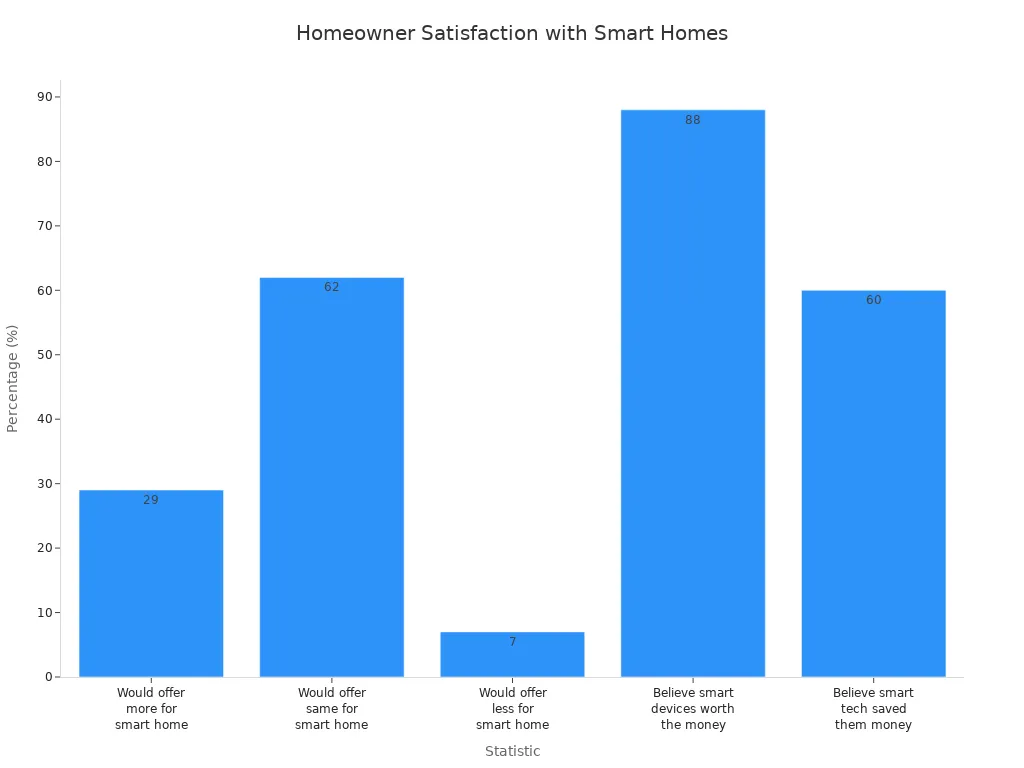
Follow each step and ask for help if you need it. Enjoy the comfort and efficiency of your new led recessed lighting. You can make your room look great and feel proud!
FAQ
How do you control Lumary Smart Recessed Light Pro?
You can use your voice with Alexa or Google Assistant. You can also use the Lumary app on your phone. The app lets you change colors, brightness, and modes from anywhere in your home.
Can you install Lumary recessed lights without a can?
Yes! Lumary Smart Recessed Light Pro has a canless design. You just cut the right-sized hole and use the spring clips to secure the light. This makes installation quick and easy.
What lighting modes do Lumary recessed lights offer?
You get three modes: Downlight for daily use, Nightlight for a soft glow, and RGB Light for colorful effects. You can pick from 16 million colors and over 14 scene modes to match your mood.
Are Lumary recessed lights safe to use?
Absolutely! Lumary Smart Recessed Light Pro is ETL-listed and FCC compliant. These certifications mean the lights meet strict safety standards. You can trust them to work safely in your home.
Can you sync Lumary lights with music?
Yes, you can! The music sync feature lets your lights change colors with your favorite songs or game sounds. This adds fun and excitement to parties or movie nights. 🎶

